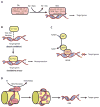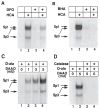Oxidative Stress and Huntington's Disease: The Good, The Bad, and The Ugly
- PMID: 27662334
- PMCID: PMC5310831
- DOI: 10.3233/JHD-160205
Oxidative Stress and Huntington's Disease: The Good, The Bad, and The Ugly
Abstract
Redox homeostasis is crucial for proper cellular functions, including receptor tyrosine kinase signaling, protein folding, and xenobiotic detoxification. Under basal conditions, there is a balance between oxidants and antioxidants. This balance facilitates the ability of oxidants, such as reactive oxygen species, to play critical regulatory functions through a direct modification of a small number of amino acids (e.g. cysteine) on signaling proteins. These signaling functions leverage tight spatial, amplitude, and temporal control of oxidant concentrations. However, when oxidants overwhelm the antioxidant capacity, they lead to a harmful condition of oxidative stress. Oxidative stress has long been held to be one of the key players in disease progression for Huntington's disease (HD). In this review, we will critically review this evidence, drawing some intermediate conclusions, and ultimately provide a framework for thinking about the role of oxidative stress in the pathophysiology of HD.
Keywords: Huntington’s Disease; Oxidative stress; redox changes; transcriptional processes.
Conflict of interest statement
The authors declare that there is not conflict of interest in publishing the paper.
Figures




Similar articles
-
Do glial cells play an anti-oxidative role in Huntington's disease?Free Radic Res. 2014 Oct;48(10):1135-44. doi: 10.3109/10715762.2014.936432. Epub 2014 Aug 14. Free Radic Res. 2014. PMID: 24957138 Review.
-
Oxidative stress is increased in C. elegans models of Huntington's disease but does not contribute to polyglutamine toxicity phenotypes.Neurobiol Dis. 2016 Dec;96:1-11. doi: 10.1016/j.nbd.2016.08.008. Epub 2016 Aug 18. Neurobiol Dis. 2016. PMID: 27544481
-
Transcriptional control of amino acid homeostasis is disrupted in Huntington's disease.Proc Natl Acad Sci U S A. 2016 Aug 2;113(31):8843-8. doi: 10.1073/pnas.1608264113. Epub 2016 Jul 19. Proc Natl Acad Sci U S A. 2016. PMID: 27436896 Free PMC article.
-
Evidence of oxidant damage in Huntington's disease: translational strategies using antioxidants.Ann N Y Acad Sci. 2008 Dec;1147:79-92. doi: 10.1196/annals.1427.008. Ann N Y Acad Sci. 2008. PMID: 19076433 Review.
-
Oxidative stress parameters in plasma of Huntington's disease patients, asymptomatic Huntington's disease gene carriers and healthy subjects : a cross-sectional study.J Neurol. 2007 Dec;254(12):1676-83. doi: 10.1007/s00415-007-0611-y. Epub 2007 Nov 9. J Neurol. 2007. PMID: 17990062
Cited by
-
ROS Chronicles in HIV Infection: Genesis of Oxidative Stress, Associated Pathologies, and Therapeutic Strategies.Curr Issues Mol Biol. 2024 Aug 14;46(8):8852-8873. doi: 10.3390/cimb46080523. Curr Issues Mol Biol. 2024. PMID: 39194740 Free PMC article. Review.
-
Nicotinamide reverses behavioral impairments and provides neuroprotection in 3-nitropropionic acid induced animal model ofHuntington's disease: implication of oxidative stress- poly(ADP- ribose) polymerase pathway.Metab Brain Dis. 2018 Dec;33(6):1911-1921. doi: 10.1007/s11011-018-0297-0. Epub 2018 Jul 27. Metab Brain Dis. 2018. PMID: 30054774
-
Apolipoprotein-decorated drug loaded liposomes mitigating copper intoxication: an in vitro and in vivo evidence-based study intervening Wilson disease.Naunyn Schmiedebergs Arch Pharmacol. 2025 May 14. doi: 10.1007/s00210-025-04226-4. Online ahead of print. Naunyn Schmiedebergs Arch Pharmacol. 2025. PMID: 40366400
-
Characterization of huntingtin interactomes and their dynamic responses in living cells by proximity proteomics.J Neurochem. 2023 Feb;164(4):512-528. doi: 10.1111/jnc.15726. Epub 2022 Nov 27. J Neurochem. 2023. PMID: 36437609 Free PMC article.
-
Sesamol: A Phenolic Compound of Health Benefits and Therapeutic Promise in Neurodegenerative Diseases.Curr Top Med Chem. 2024;24(9):797-809. doi: 10.2174/0115680266273944231213070916. Curr Top Med Chem. 2024. PMID: 38141184 Review.
References
-
- Vonsattel JP, DiFiglia M. Huntington disease. J Neuropathol Exp Neurol. 1998;57(5):369–84. - PubMed
-
- Ross CA, Tabrizi SJ. Huntington’s disease: From molecular pathogenesis to clinical treatment. Lancet Neurol. 2011;10(1):83–98. - PubMed
-
- A novel gene containing a trinucleotide repeat that is expanded and unstable on Huntington’s disease chromosomes. The Huntington’s Disease Collaborative Research Group. Cell. 1993;72(6):971–83. - PubMed
-
- Langbehn DR, Brinkman RR, Falush D, Paulsen JS, Hay-den MR International Huntington’s Disease Collaborative G. A new model for prediction of the age of onset and penetrance for Huntington’s disease based on CAG length. Clin Genet. 2004;65(4):267–77. - PubMed
Publication types
MeSH terms
Grants and funding
LinkOut - more resources
Full Text Sources
Other Literature Sources
Medical
Research Materials

